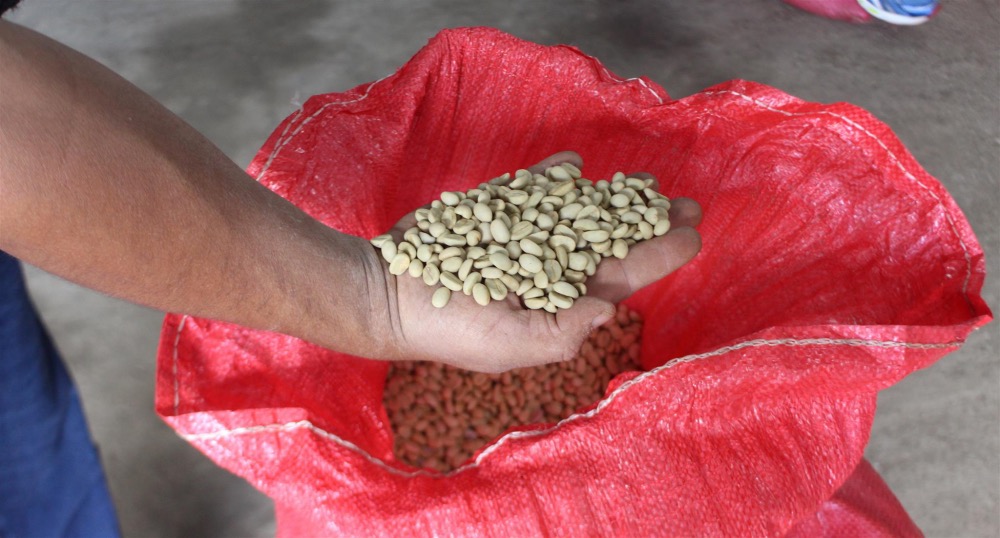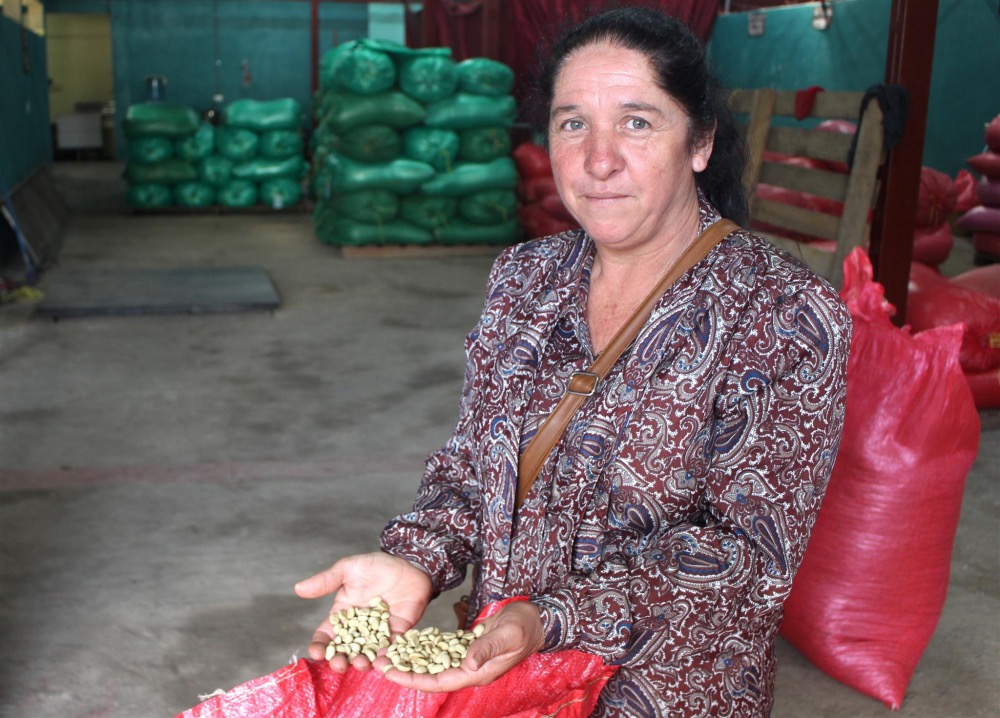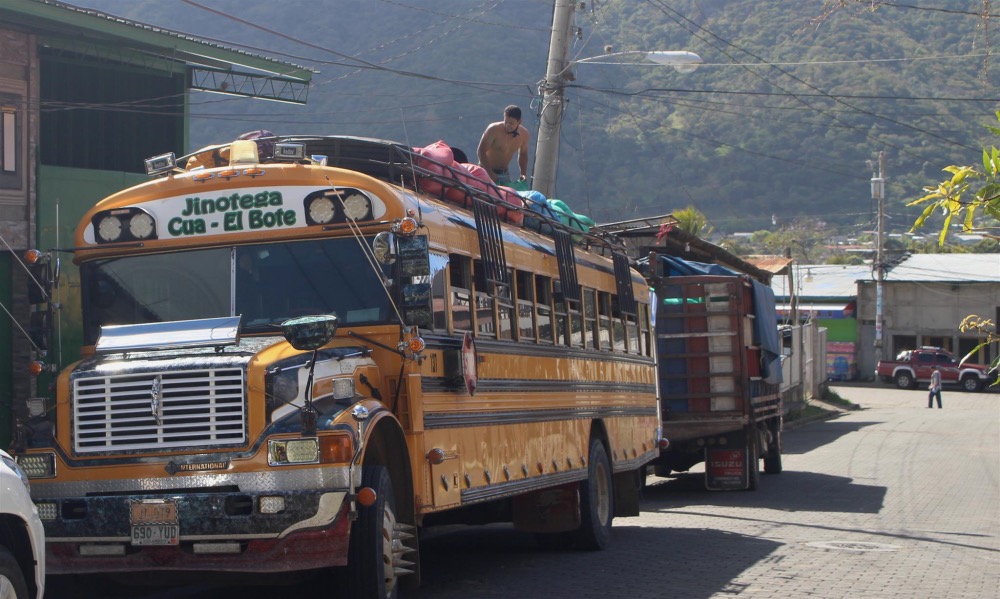
ANNA-CATHERINE BRIGIDA, of Thomson Reuters Foundation, reports on the challenges coffee farmers in Nicaragua are facing thanks to rising temperatures – and two hurricanes which impacted the country late last year…
Jinotega, Nicaragua
Thomson Reuters Foundation
Maria Gonzalez, 50, knows that growing coffee in Nicaragua’s northern mountains – as she has done since she was a little girl – gets harder and harder each year.
Rising temperatures are spoiling harvests when berries ripen too fast and a coffee leaf disease wiped out about half of the region’s crop between 2012 and 2014, killing most of Gonzalez’s plants.
Just as her new plants were starting to flourish, whipping winds and torrential rains from hurricanes Eta and Iota last November uprooted the bushes and shook the unripe berries to the ground.
With an initial hard few years now stretching into a decade, coffee farmers like Gonzalez face a tough decision: stay loyal to their coffee crop or find a new way to survive.
“I’m experimenting with a lot of things because if I see that one is doing better, I’ll stick with that,” she said. “And if not, we’ll be there fighting for our coffee.”

A worker sifts through coffee beans harvested by the Soppexxca co-operative’s producers, in Jinotega, Nicaragua, on 1st February. PICTURE: Thomson Reuters Foundation/Anna-Catherine Brigida
More than 200,000 hectares of food and other crops throughout Central America were devastated by the 2020 hurricanes that slammed the Nicaraguan and Honduran coasts and caused flooding and landslides across the region.
The storms destroyed an estimated 10 to 15 per cent of this year’s coffee harvest for producers in Gonzalez’s co-operative, Soppexcca, according to its manager Fatima Ismael Espinoza.
“These twin hurricanes make us even more vulnerable. All of this investment we had been doing is lost, and we have to start over with programs of reforestation, soil improvement and diversification of crops.”
– Fatima Ismael Espinoza, manager of Soppexcca.
As a result, Gonzalez expected to sell 10 per cent less than the year before, making it harder to feed her children and fund their education.
Other parts of the country have reported higher losses. The Nicaraguan Association of Producers and Exporters registered a 40 per cent decrease in coffee exports from October, 2020, to January, 2021, compared to the same period a year earlier.
“That kind of a loss magnifies the challenges farmers were already facing,” said Rick Peyser, senior director of private sector partnerships at aid agency Lutheran World Relief, who has worked in sustainable coffee for three decades.
Many are already struggling to get enough food and may go hungry for months when earnings from the coffee harvest run out.
“These twin hurricanes make us even more vulnerable,” said Espinoza. “All of this investment we had been doing is lost, and we have to start over with programs of reforestation, soil improvement and diversification of crops.”
Soppexcca works with more than 600 small-scale coffee farmers to develop and promote sustainable production methods.
The co-operative, which sells to fair trade buyers in Europe and the United States, focuses on teaching farmers how to better care for the environment, particularly soils and forest cover.
Espinoza also emphasised the need to move from single crop agriculture that leaves coffee farmers vulnerable in a bad year.
She recommended trees that can provide shade, like guava, plantain and banana, which also supply another product to sell.
“We can’t wait to take action until 2050,” she said.

Flora del Socorro Montenegro shows off coffee beans at the Soppexxca cooperative’s warehouse the day she brought in her harvest, in Jinotega, Nicaragua, on 1st February. PICTURE: Thomson Reuters Foundation/Anna-Catherine Brigida
Jinotega, with average annual temperatures historically around 20 to 24 degrees Celsius, is known as an oasis from the scorching temperatures that can hit much of Nicaragua.
But in 2019, Jinotega’s average temperature was 0.5 to one degree Celsius higher than in previous years and is only expected to keep climbing, according to the Managua-based Humboldt Center, a non-profit that promotes sustainable development.
Gonzalez will try just about anything, with her efforts to date including soil conservation, new crops, cultivating a vegetable garden and even growing two small cacao plants.
A few years ago, an NGO came to her home to explain the benefits of planting some cacao instead of coffee, saying cacao was less labor-intensive, better adapted to warming temperatures and offered more stable prices.
But the farmer was concerned that swapping out too much coffee for cacao would leave her with nothing if the plants did not flourish.
“I was curious so I got two [cacao] plants. We’re testing to see how it goes.”
– Coffee grower Maria Gonzalez
“I was curious so I got two plants,” she said. “We’re testing to see how it goes.”
Other coffee farmers have resisted change, fearing their gamble will end badly.
“I want to see if it works for someone else,” said Flora del Socorro Montenegro, a 52-year-old coffee farmer who lost at least 10 per cent of her harvest to the storms.
Gonzalez learned to harvest coffee from her father, but it’s unlikely her seven children will follow in her footsteps.
Instead, they have sought other opportunities. “We feel like it’s not enough with the coffee we produce,” Gonzalez said.
In 2017, her only son migrated to Costa Rica for temporary farm work. He came home after making enough money in eight months for his family, and now works as a taxi driver.

Workers load the coffee harvest onto buses outside Soppexxca’s warehouse in Jinotega, a city surrounded by mountains and known for its coffee production, in Jinotega, Nicaragua, on 1st February. PICTURE: Thomson Reuters Foundation/Anna-Catherine Brigida
Ana Julia Montenegro, 39, often works long hours during the coffee harvest, from 3am to 9pm, to eke out a living.
But it still does not provide enough to support her three children, so her husband does a construction job to earn extra.
Even though they struggle, leaving home seems too dangerous for her or anyone else in her family to take the risk.
“It’s better to figure out how to do things and to survive here,” she said.
Montenegro is trying to diversify her crops and has planted fruit trees including banana and guava, but is not convinced cacao is worth the five-year wait before it bears fruit.
Jinotega has not seen the same exodus of migrants as other parts of Central America in recent years.
Soppexcca’s Espinoza is convinced families in the co-operative can have a sustainable future there.
“There is a percentage that dream of leaving, but we see a mainly stable youth, that are committed (to staying),” she said.
“Our challenge is to create adequate conditions for progress and development so that the rural zone is attractive.”
Helping Nicaragua’s small-scale farmers overcome the challenges of climate change will need to include all parts of the supply chain, including co-operatives, exporters and buyers, as well as national and local governments, according to Peyser.
After the recent hurricanes, the central government announced a plan to support small coffee producers through workshops teaching skills to boost their harvests.
“Small-scale coffee farmers are probably the most resilient people I’ve ever met,” said Peyser. “But at the same time, they need assistance – and it’s only fair [they get it].”
“Everyone can play some kind of role. But it really needs to happen soon because it’s not going to get better.”






